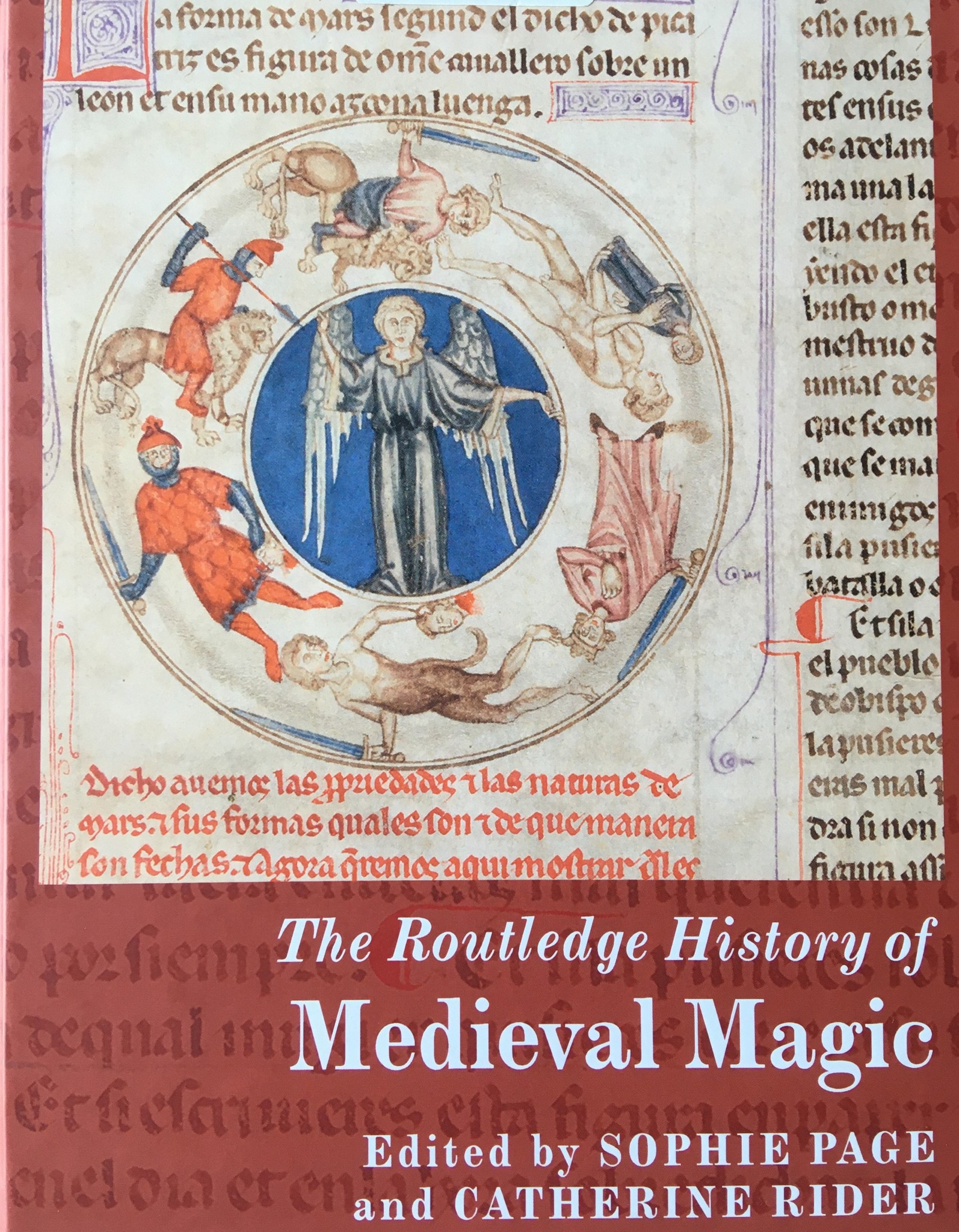The Routledge History of Medieval Magic
The Routledge History of Medieval Magic
Sophie Page & Catherine Rider (Eds)
Routledge 2019.
A giant compendium of magic.
This thick volume of papers brings together recent writing on a wide range of magical topics by both established and new scholars in the discipline. Its range is immense. Richard Kiekhefer, whose 1989 volume Magic in the Middle Ages has become a standard text, opens the first major section and provides an editorial hand in a paper of Responses at the end of it. Medieval archaeologist Roberta Gilchrist provides a paper on Magic and archaeology and the issue of ritual deposits. This is no lightweight catchpenny offering, and running to over 500 pages it is not a physically slight volume either.
That said it is an extremely readable volume, though clearly one for the longer haul rather than the work of an afternoon. All the contributors are well versed in their particular field of interest and all have something to add to the extensive interdisciplinary tapestry of the book. Indeed, it becomes absolutely clear (if it had not occurred to the reader already) that interdisciplinary is the only intelligent approach to the study of magic in the past. In the 21st century we may tend to compartmentalise life into work, worship, medicine and play. In past eras while most might distinguish work from play, very few seem to have omitted some form of religio-magical belief from anything. Life and belief were inextricably intertwined.
For the graffiti hunter there is no specific section, which, if one is devoted to the hunt for arcane symbols scratched on walls, may seem at first like an omission. However, given the range of material in this book, there has to be an acknowledgement that apotropaic graffiti, however fascinating, form a very small part of the vast panoply of magical procedures. The types and uses of magical symbols are described throughout the papers, in numerous contexts. Uses of symbols are discussed throughout the first section. Charles Burnet, in his paper on Arabic Magic includes examples of seals and sigils, and later in the volume papers by Damaris Aschera Gehr and by Nicholas Weill Parot discussing some of the key figures in magical texts, and using illustrations including a fine example of the seal of Solomon: ‘one of the instruments employed to constrain evil spirits’. The makings of the majority of apotropaic graffitos are all here, springing from their scholarly magical roots.
Further on in the volume John Haines contributes a fascinating paper on music and magic, an area almost totally omitted in standard studies of magic. A serious omission if one considers the amount of music used liturgically by the church, which in its own way contributed the ‘magic’ of religion, and the requirement for music – at the very least in the form of chanting spells – in the performance of magic, whether medicinal or necromantic. In a short but intriguing paper, Haines concludes by mentioning the use of musical notation not merely to convey the music, but also as a form of esoteric writing, carrying an important symbolism entirely separate from that of the notes. Perhaps an elucidation of some of the odder graffiti figures.
And finally, before the consideration of anti-magical discourse, Sophie Page, one of the editors of this volume, presents a discussion of Medieval Magical Figures. Not, in case the eager graffiti hound is straining to get to the chase, a discussion of graffiti, but of the types of diagram that convey ‘the meaning, structure or workings of something and the relationship between its parts’. A part of the ritual toolkit, in fact. However, and this for the graffiti hunter is exciting, these images are in many cases, ones which one might expect to find scratched on walls and chimney pieces of buildings of suitable age. Because, yet again, the folk practitioners have appropriated and used (doubtless ‘serious’ practitioners would have said ‘subverted’) symbols of perceived power from a more formal setting. Crosses. eyes, symbols of the virgin, stars, magic squares; if the power was believed to be in the symbol then the symbol, as we so often see, could, and would, be used for folk magic.
The scholarly magical practitioners produced charms, sigils and seals in abundance, many consisting of concentric circles (as so often seen on walls…) inscribed on vellum and with each circle helpfully annotated with the power invoked by it. A series of layered circles might constitute a charm, and a series of charms, all equally well labelled, might be constructed as a set, so that any and all problems could be addressed by them. The notion that charms from a set might then be selected as appropriate to counter the relevant misfortune conjures a curious image of a medieval version of Top Trumps.
Sets and incomplete sets of charms must have circulated and re-circulated. Copied, plagiarised, defaced and copied again. The original scholarly high-magical details and meanings lost, but the intent and the certainty of tangible magic remaining in the mind of whoever possessed them, and perhaps ultimately represented them, albeit inaccurately, on the walls.
This is a wonderful and very satisfying book of considerable scope (tome would not be a misnomer). It covers a vast range of topics, many of them barely researched before, and it concludes each paper with considered proposals for further research in this still infant discipline. It is, perhaps, only tangentially connected with apotropaic graffiti and folk magic. It is, in addition, shudderingly expensive. The better news is that it is widely available through the library system, with 16 holding libraries on JISC library hub. I heartily recommend borrowing it.
Review by Rebecca Ireland
The Routledge History of Medieval Magic ISBN 9781472447302
Published January 24, 2019 by Routledge
568 Pages HB £152 (reduced from £190) E book 31.99 from Routledge
